Email Us At info@pdcclosedbell.com
PDC Closed Bell Training Course Information Package
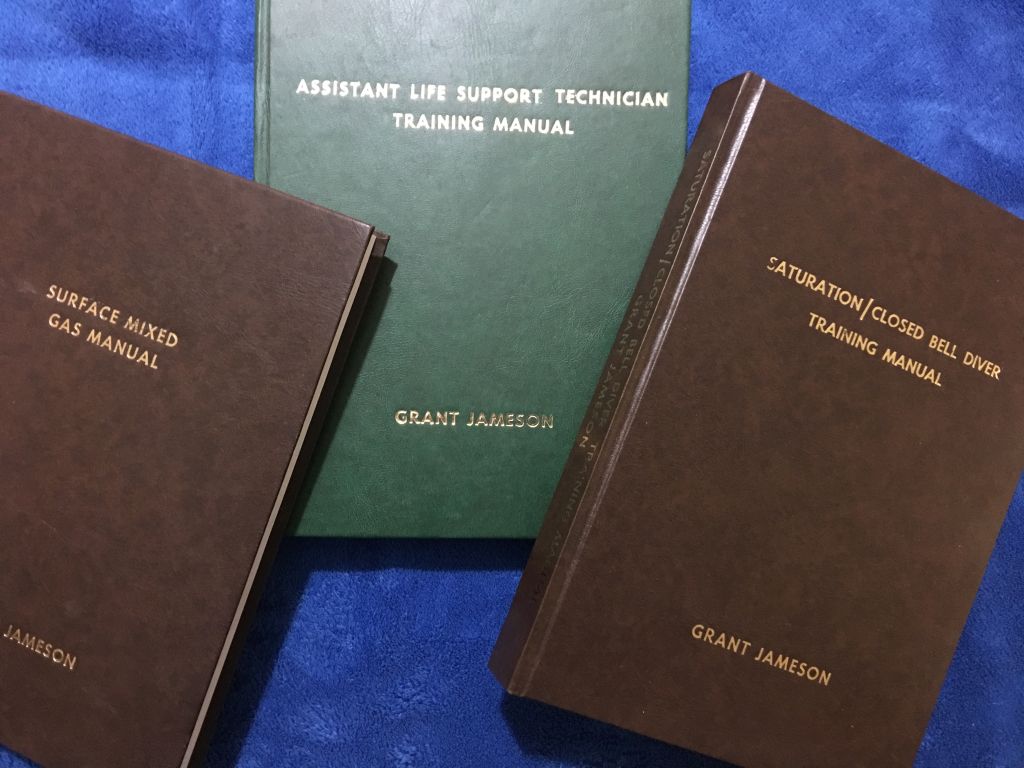
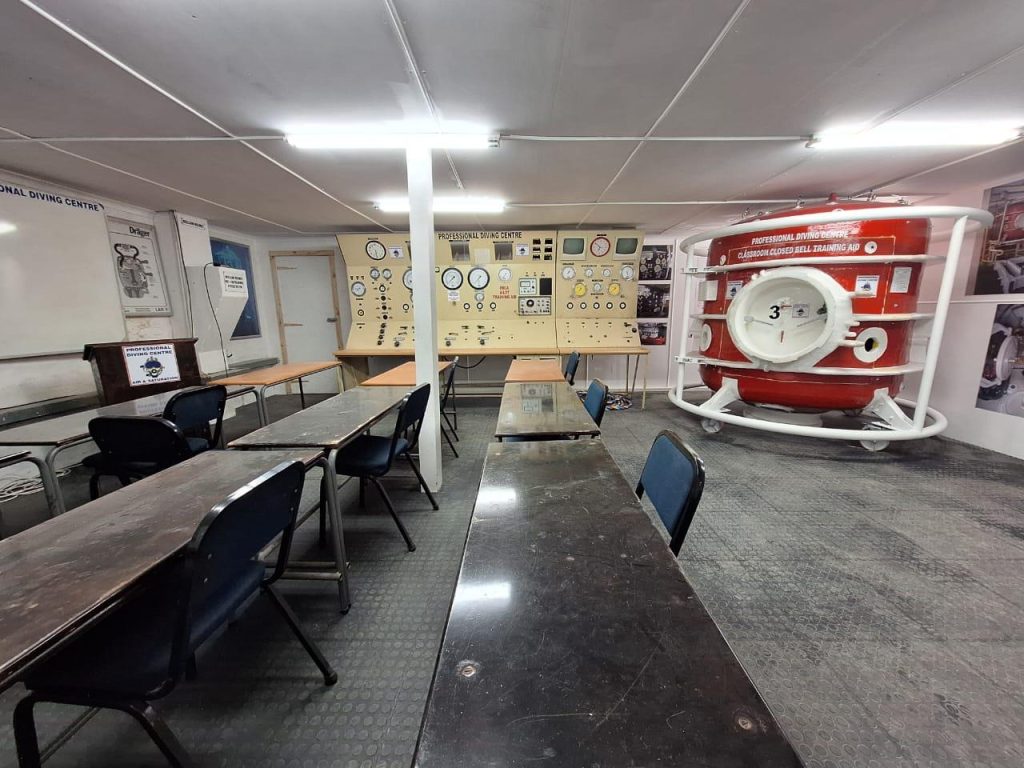
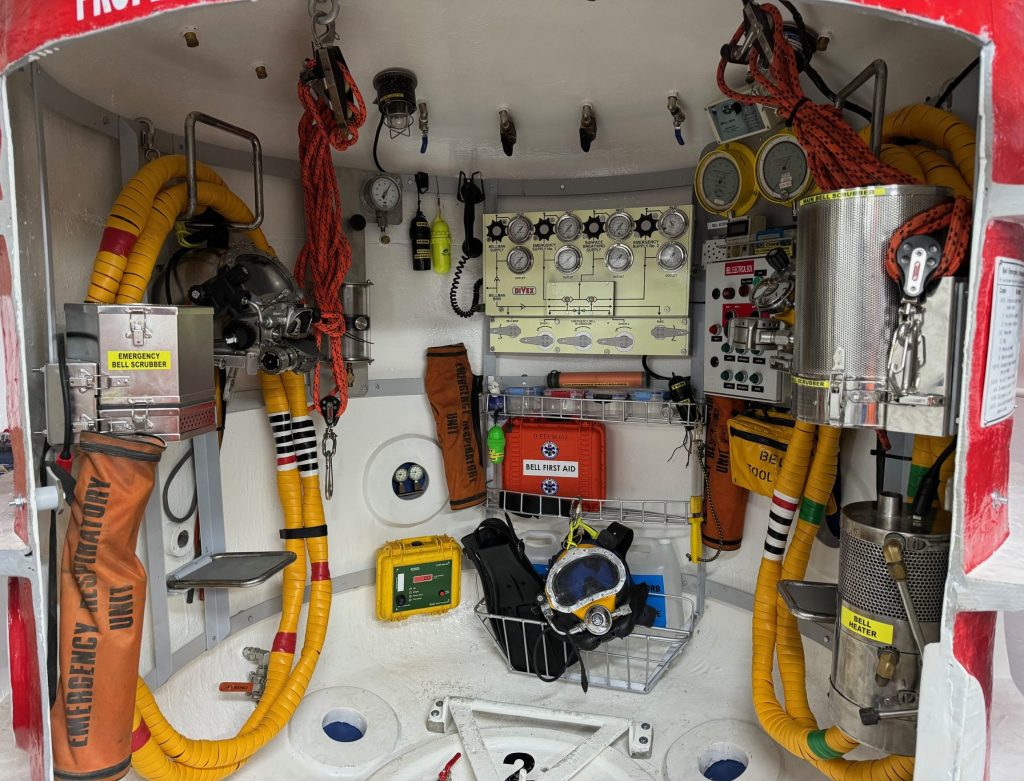
The PDC Closed Bell Courses will be run over 35 days (5 weeks) in two modules. Theory and Practical.
Module 1
- Lectures Closed Bell Theory & IMCA/ALST which is the chamber theory for the closed bell saturation diver
Module 2
- Practical which includes the practical Saturation Chamber and Bell diving part of the course. Deep dives will be done according to the new IMCA / IDRF training standard & exceeding it. We need this 5-week time frame, if we are going to do it comprehensively to give the correct knowledge and skill required.
- If you are interested in attending the closed bell course now or in the future kindly view the website information and then email us on info@pdcclosedbell.com. For further interest view our website page & Facebook page and see our equipment and video clips of our A/LST course which includes practical skills also covered on closed bell training.
- Importantly, PDC will not push out lots of closed bell divers on a cheap, quick, shortcut method to do the least amount on a training course and be a nightmare to Dive Supervisors & companies in the industry. Proper training costs money to run it, safely and comprehensively, invest in your self – PDC
- You need to be competent as a closed bell diver as your team members lives also depend on it. IMCA accepts that the Closed Bell Diver after training is able to work to a maximum of depth of 300 metres. Note: PDC has two other sat systems that could be setup if a demand from industry requires a sudden increase in closed bell divers. At this point there are enough schools and no need to flood a market with closed bell divers. The focus needs to be on the quality and competency of closed bell training and not the volume of divers quickly trained as this reduces safety, reduces jobs between divers and has the knock on affect of reducing the divers day rate / wages.
- The PDC Closed Bell Diver Course is for Offshore Air Divers with IMCA DMT who have been working in the Oil and Gas industry for two years or more with a least 100 logged offshore working dives & 100 hours of bottom time, as these divers will have earned the experience offshore needed for the course pre-requirements and be suitable to move onto the next step in saturation operations after the closed bell training when an opening in A/LST or saturation bell diving operations comes up.
- PDC has built a good reputation over more than 37 years in the commercial diving industry for offering excellent comprehensive 50 msw air diver training courses of 12 weeks duration with over 648 hours and over 100 training dives including wet bell, dive basket and actual SURD 02 decompression as per offshore using a wide range of the latest equipment. Underwater tools training is giving with working skill tasks in Pneumatic / hydraulic tools, Air Lifting, Rigging, Lift Bags, HP water jetting with retro jet gun as well as Cavi jet gun, Wet Stick welding, Broco burning, Flogging Flanges and Hytorq, Chamber Operations 20 hours practical or Chamber operator 50 hours practical, it is all done on the combo PDC 50 msw Air course in 12 weeks We have stopped our Air Training at present to focus more on the Closed Bell Courses.
- We at PDC are dedicated to quality training. At PDC we pride ourselves on having small numbers of students in a class for maximum learning to take place. The same quality methods & comprehensive training will be found within the saturation closed bell training.
- The closed bell course includes weekends. The course includes the IMCA A/LST & Closed bell theory and exams. The IMCA A/LST is an important qualification and in the new standards it is a compulsory part of the course. When on deck waiting for a chance to go into sat you can assist the appointed A/LST, LST & LSS and get more experience how things work with saturation chamber procedures offshore. Also helps you understand the term keep your fingers off the chamber call button & plan Medlock usage, which saves gas.
- The course fee includes a dive medical examination which all students are required to do even if you have a valid in date Dive Medical or medical from elsewhere in the world. The A/LST course is included in the closed bell course.
Training Dives on the PDC Closed Bell Course will be done with the following breathing helmets and band masks.
- The new Kirby Morgan Reclaim Diamond Helmet as well as the 601 Ultrajewel Reclaim Helmet and KMB Band Mask 18 are used and the breathing gas supplied in the bell is supplied by the industry known Mara Bell Panel and Divex Bell Reclaim system. This is the common equipment used in closed bells in the dive industry, and you will be trained in its use during the course. There is a fibreglass closed bell copy of the PDC Operational bell in the classroom with all the equipment as well.
- The initial shallow dives will be done with maximum use of the KMB Band Masks to ensure divers have enough diving time on them as most divers offshore do not use them on a daily basis offshore, like the helmets. This extra use of the Band Mask adds to extra safety of bellman training and deep bellman lockout rescues during training.
- The last few shallow bell training dives will be done with two types of modern reclaim helmets KM Diamond and 17 C Ultra Jewel 601 Helmet in preparation for the Deep bell dives when these Reclaim Helmets will also be used.
- Note: the added use of diving with the new KM Diamond Reclaim Helmet will prepare you for either reclaim helmet in future work.
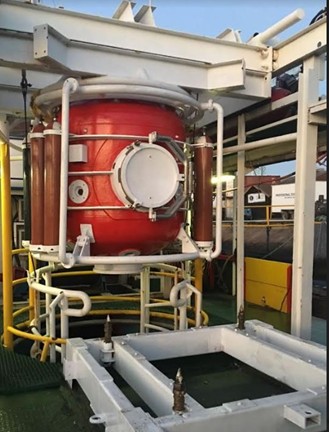
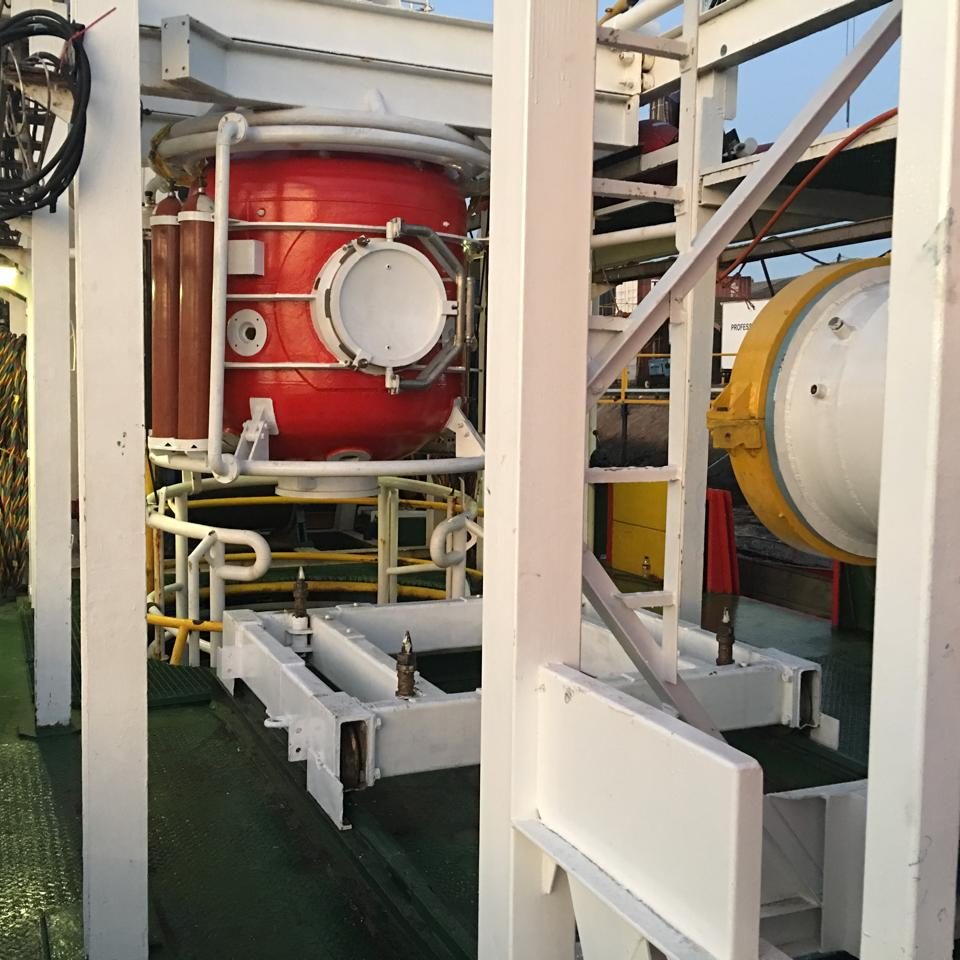
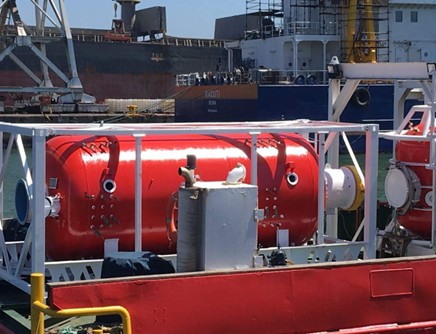
- The Living Chamber and Wet Pot are part of the HES – HRC chamber and allow for the same options as a HRF facility. The divers can be resting on beds in the Living Chamber while the Specialist Doctor and etc. can be locked through the wet pot into the living chamber and be decompressed out through the wet pot after attending to divers in HRC etc.
- There is a Dedicated Control Room and LSP unit with ECU units to connect to the recovered HRC to ensure safe operation of the HRC as well as acting as a fully HRF.
- PDC also has an extra 1800 mm Twin Lock DDC as the dedicated post sat bend watch chamber, in addition to the Saturation System chambers.
- Accommodation and food are not included in the course fees, unless you are in Saturation. Accommodation is R 350-00 (approx USD $ 19-99) per night & provided by a private entity.
- Some students may have friends in the area where they may be able to stay. Daily transport to and from school & Deepworx in the harbour is provided only from the PDC arranged Accommodation B &B and the dive school classrooms.
- The Closed Bell Course and deep dives are run off the PDC training vessel Deepworx which has a moonpool for the closed bell operations operating out of the suitable Harbour 1 kilometre away from the classroom.
- For Airplane flight tickets best plan to have a air ticket you can change for any unforeseen circumstances, like the past covid 19 lockdown etc whether in South Africa or your own country and you are unable to return to your home country and you need to remain in South Africa, your accommodation/food shall be at your own expense as PDC cannot be held responsible for accommodation/food while you are in South Africa
- You would fly into Cape Town International Airport after which you would get a shuttle, bus ride or hire a car and get to Gansbaai which is approximately (1 hour 30 minutes travel) 153 km from Cape Town.
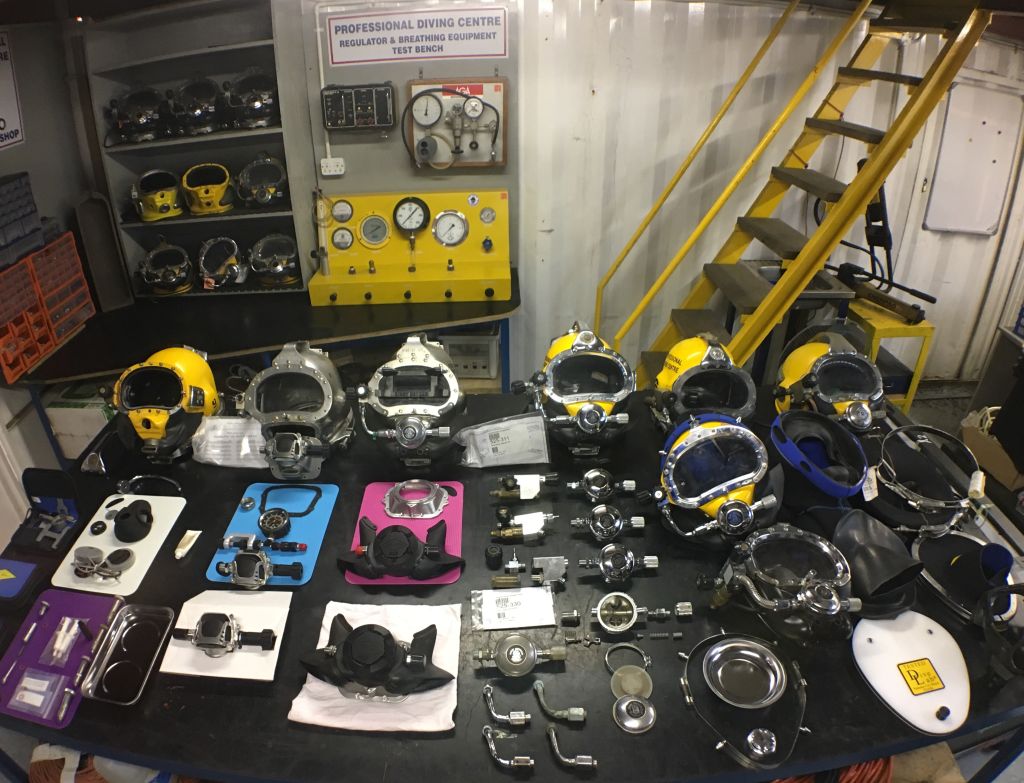
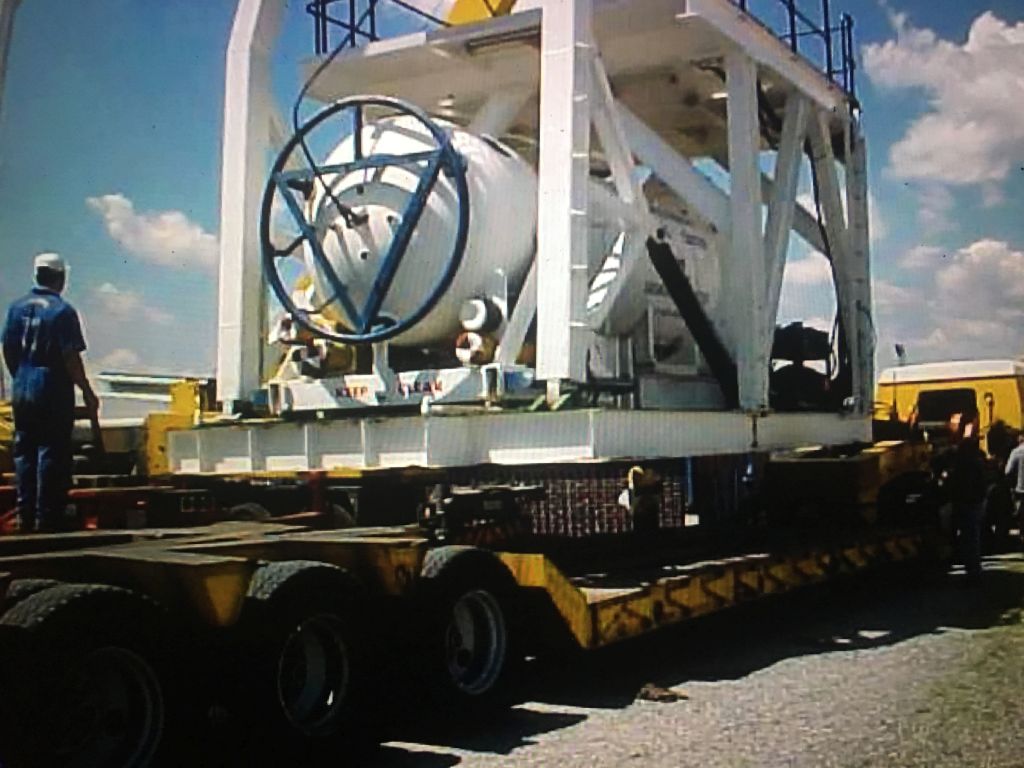
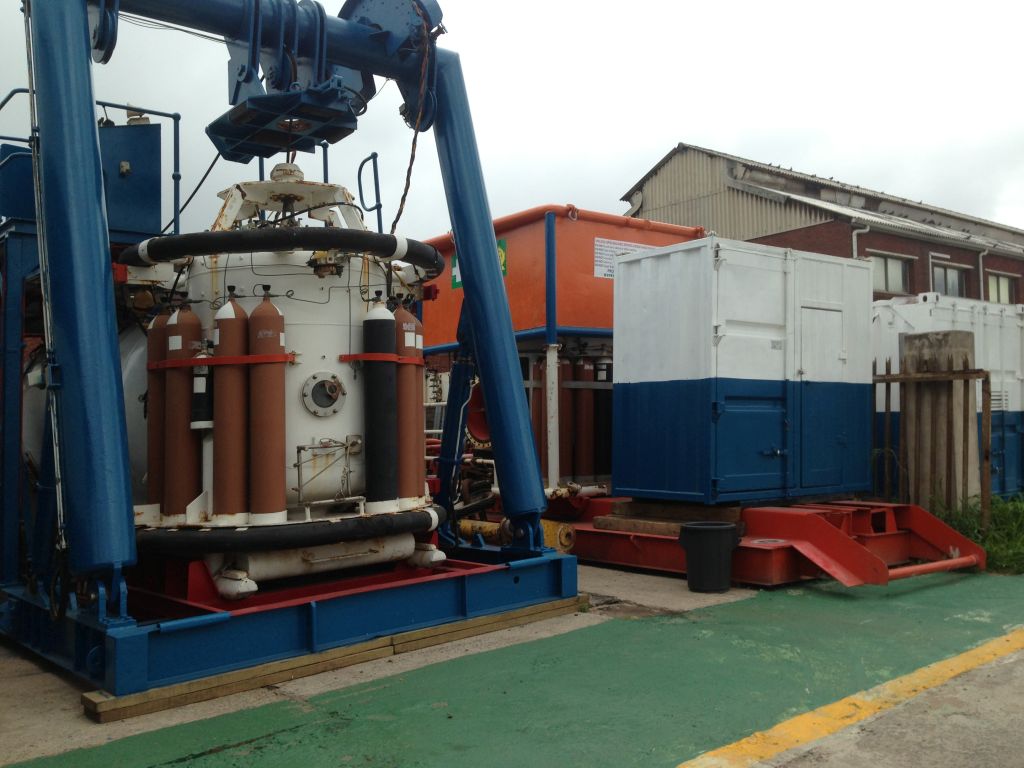
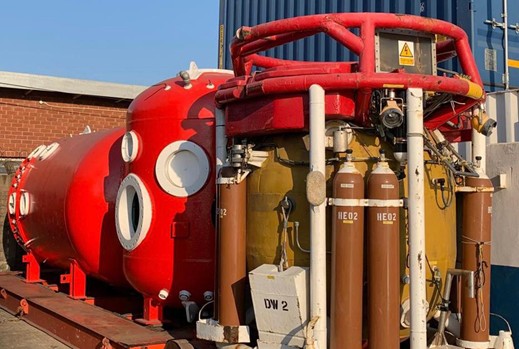
- The competences to be met during the training. The minimum theory of the closed bell is the same as the A/LST for the chambers and extra lectures for closed bell side of the training. A minimum of 48 bell lock out dives are completed during the training course with a set number of TUP transfers. There is a new standard out set by IMCA and IDRF for the world training centres to all adhere to and PDC adheres to this new standard 100% and exceeds it.
Bell lockouts as diver
Lockouts undertaken as a diver incorporate an expected diver training activity & emergency procedure. Lockouts undertaken as a diver are of a suitable duration to accomplish the proposed training activity for the lockout drill / procedure. Excursions and umbilical lengths are such that both the diver and bellman can apply effective umbilical management. Reclaim helmets are used on the course as well as bell reclaim training operations.
Bell lockouts acting as bell-man (standby diver)
- Bellman Duties in Bell and Rescue Locks
The Trainee Diver or Bellman makes various skill lockouts from the bell during each Bell run
- The Trainee Diver or Bellman make lockouts from the bell at depth during each Bell run. The repetition drills of rescuing & recovering divers to bell and preparing bell to leave bottom with door sealed. Then the changeover of Bellman duties to Lock out Diver requiring dressing in again and diver lockout checks and lock outs. The roles of diver and bellman change throughout the training course so that both skill sets are practiced in training until full competency in each is reach.
- A minimum of 14 complete bell runs including a set number of transfer under pressure are carried out during the PDC Closed Bell course as the absolute minimum. PDC training aims for more than 14.
The trainee closed bell diver will undergo practical training and assessments in the following
Bell Diving emergency procedures:
- Diver Personal emergency procedures and drills including various diver Bailouts
- Bellman personal emergency procedures and Bellman duties including rescues.
- Lifting an unconscious diver into the bell sealing the bell and monitoring the diver during the ascent.
- Transferring an unconscious diver through the TUP trunking to the chamber.
- Performing CPR and then placing on BIBS. (Also using the NUI Chest Compression Device)
- Simulated rescues (at least 5) of an unconscious diver from bellman rescue in the water below bell back to bell, once student diver in position in bell for CPR then changed over to the PDC CPR Bell half Dummy for CPR up to transfer through Bell TUP trunk into Wet Pot and onto the Main Living Chamber switching over from student diver once he is on bunk to CPR on a CPR Dummy including the NUI.
- Loss of gas to the bell. (includes Main Gas as well as Onboard Gas Heliox and Oxygen)
- Loss of gas to the diver.
- Loss of communications. (Diver, Bell Horn, Sound powered onto TWC)
- Loss of umbilical (communications, gas, hot water, power and internal pressure).
- Loss of bell seal at depth & failure to seal bell bottom door.
- Communicating with a lost bell. (Including; Lights, Hand signals at viewport, Bell tapping & Through Water Communication Unit)
- Donning survival equipment. Bell Survival suits and HRC suits with procedures
The Trainee closed bell diver will undergo practical training and assessments in the following chamber emergency procedures:
- Emergency evacuation of a chamber with a fire inside the chamber.
- Emergency evacuation of a chamber with a loss of pressure.
- Chamber contaminated atmosphere.
- Loss of electrical power to the Chamber.
- Hyperbaric evacuation systems.
- Therapeutic and abort decompression tables.
- Breakdown of the main ECU. (Basic ECU Checks in the chamber, Use of Emergency Scrubbers, Use of Lung Scrubbers, Warmth and cooling issues and procedures) + (Dive Tech lecture and strip down of ICU in PDC workshop and 24 volt fan replacement in ICU)
- Simulated evacuation to HES HRC / HLB. (Procedures in HES as well 02 Make Up in HES)
- Using secondary communications with a chamber.
- Use of BIBS and Lung scrubbers.
Trainees will be supervised by an instructor in the bell until the trainee is deemed competent with the lockout and bellman procedures
- As a minimum the instructor is to be in the bell for at least the first three bell lockouts. These supervised runs may be made from “deck to deck” without “transfer under pressure” (TUP).
- All subsequent bell runs should be made using full TUP procedures. The Bell dives are to start in ML through wet pot, Bell trunk with strict door controls onto bellman checks and then diver transferring to bell from wet pot after bell checks completed. Then the Closed Bell Locks off from the system under pressure for the minimum depth 5 metres.
- Perform at least a minimum of 5 chamber pressurisations, where you will do pre-dive checks of living and transfer chamber, as well as many bell internal and external checks.
- Under supervision, monitor the chamber atmosphere while occupants are in saturation.
- Undertake bell pre-dive checks on at least 4 separate days.
- Setup the Internal Bell Reclaim including checking Seco Valve indicators, BPR needle valve, setting Negative Reclaim Depth Gauge, Opening hull return reclaim valves slowly, Reclaim water trap use.
- Operate the on surface bell control panels under supervision in Dive Control.
- Operate the on surface chamber controls panel under supervision in Sat Control.
- Undertake training in the process associated with hyperbaric evacuation and launch procedures.
- Act as a diver during 3 Deep bell lockouts using a Reclaim Helmet at a depth according to the training standard.
- Act as a diver from a storage depth on two bell runs. The lockout for these bell runs will be at least 30 minutes for each dive on each occasion.
- During these bell run lockouts the diver will use a reclaim helmet and also swim away from the closed bell using the diver’s excursion umbilical.
- Act as a bellman from a storage depth on at least two deep bell runs, including the operation of the bell Reclaim system and perform a lock out rescue as bellman on one of the deep lock outs.
- Activate secondary life support during at least one of the dives.
- Undertake saturation decompression from the living depth.
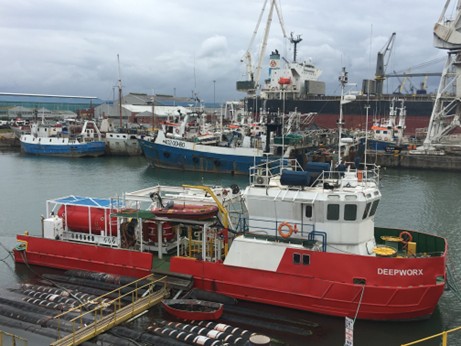
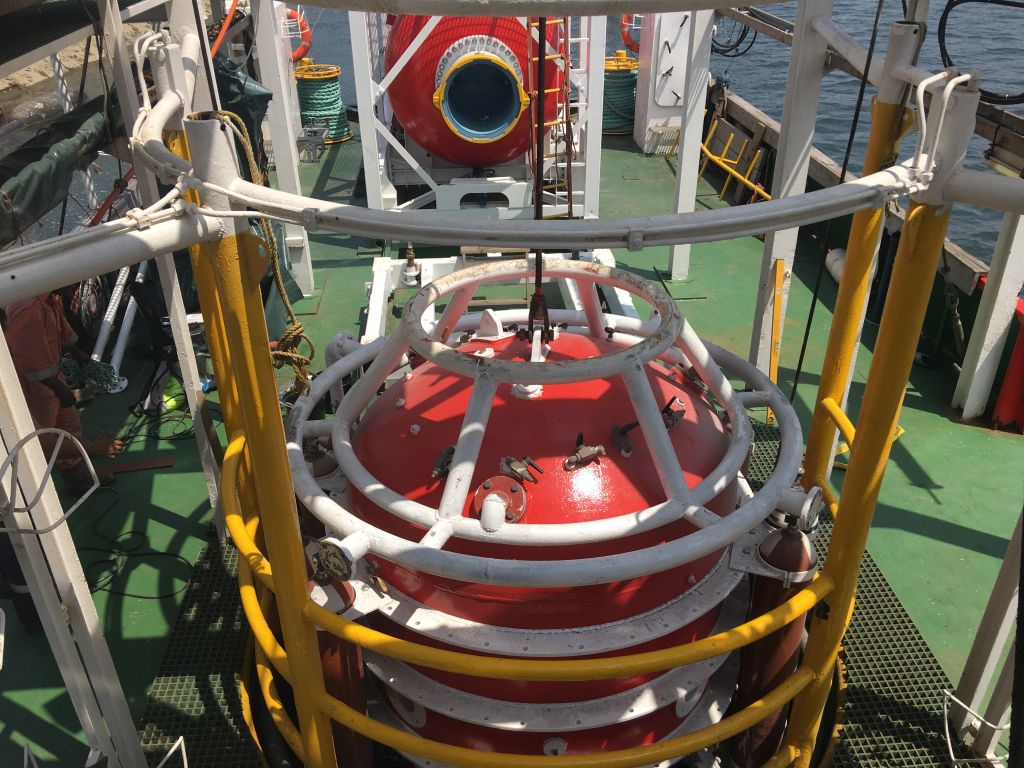
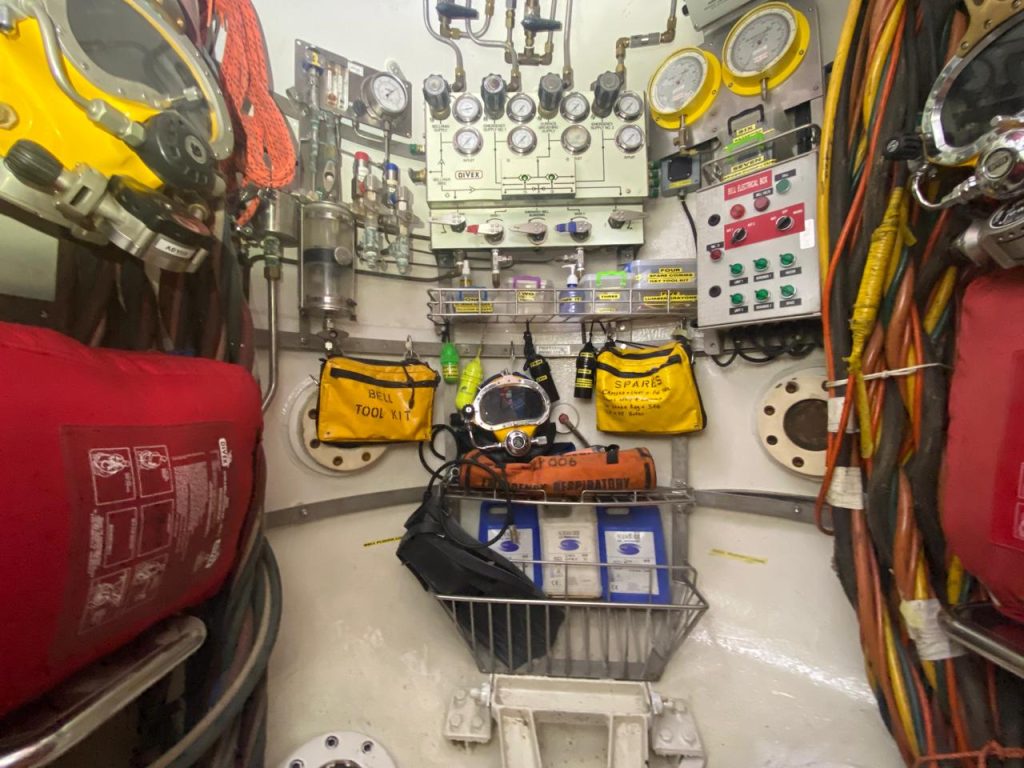
IMCA RECOGNISED OFFSHORE SURFACE SUPPLIED DIVER CERTIFICATIONS – Acceptable For Attending PDC Closed Bell Training
Diver Certificates
The acceptance criteria for diver training certificates to be recognised by the International Marine Contractors Association (IMCA) acceptance criteria.
Surface-Supplied Diver Certificates:
- Australian Diver Accreditation Scheme Part 3
- Brazilian Curso de Especialização em Mergulho para Praças
- Brazilian Curso Especial de Escafandria para Officiais
- Brazilian Curso Básico de Mergulho Raso Profissional
Brazilian certificates to be supported by a Brazilian Navy stamped divers logbook - Canadian Category 1 Diver
- Canadian Surface Supplied Mixed Gas Diver to 70m
- Canadian Unrestricted Surface Supplied Diver to 50m
- French Class 2 Mention A
- India – Commercial Surface Supply Course, Kochi (run from September 2002 to 12 January 2013)1
- Netherlands Part 1 – Surface Dependent Diver (issued up to 2002)2
- Netherlands Certificaat Duikarbeid Categorie B42
- New Zealand Construction Diver Part 33
- Norwegian NPD Surface Diver
- Norwegian PSA Class 1 Surface Oriented Diver
- South African Class II & Class II M
- Swedish B 50 Våtklocka (VK)
- TSA or MSC Basic Air Diving
- UK HSE Surface Supplied Diving Top-Up
- UK HSE Part I
- UK Transitional Part I (issued between 1 July to 31 December 1981)
- USA ADCI
IMCA Recognized Certificates for Offshore Closed Bell Diving – Found in IMCA D014 – IMCA International Offshore Code of Practice
Closed bell divers’ certificates
- Australian Diver Accreditation Scheme Part 4
- Brazilian Curso Especial de Mergulho Saturado
Brazilian certificate to be supported by a Brazilian Navy stamped divers logbook - Canadian Category 3 Diver4
- Canadian Bell Diver
- French Class 3 Mention A
- Netherlands Part 2 – Bell Diver (issued up to 2002)2
- Netherlands Certificaat Duikarbeid Categorie C2
- New Zealand Construction Diver Part 43
- Norwegian NPD Bell Diver
- Norwegian PSA Class 2 Bell Diver
- South African Class 1
- Spain Buceador Instructor – [Closed Bell] Buceador de Primera Clase o de gran profundidad – [Closed Bell] Buceador Profesional de Gran Profundidad a Saturacion [Closed Bell]
- Sweden Certifikat C – [Closed Bell )
- UK HSE Closed Bell
- TSA or MSC bell diving
- UK HSE Part II
- UK Transitional Part II (issued between 1 July to 31 December 1981)
- IMCA Bell Diver:
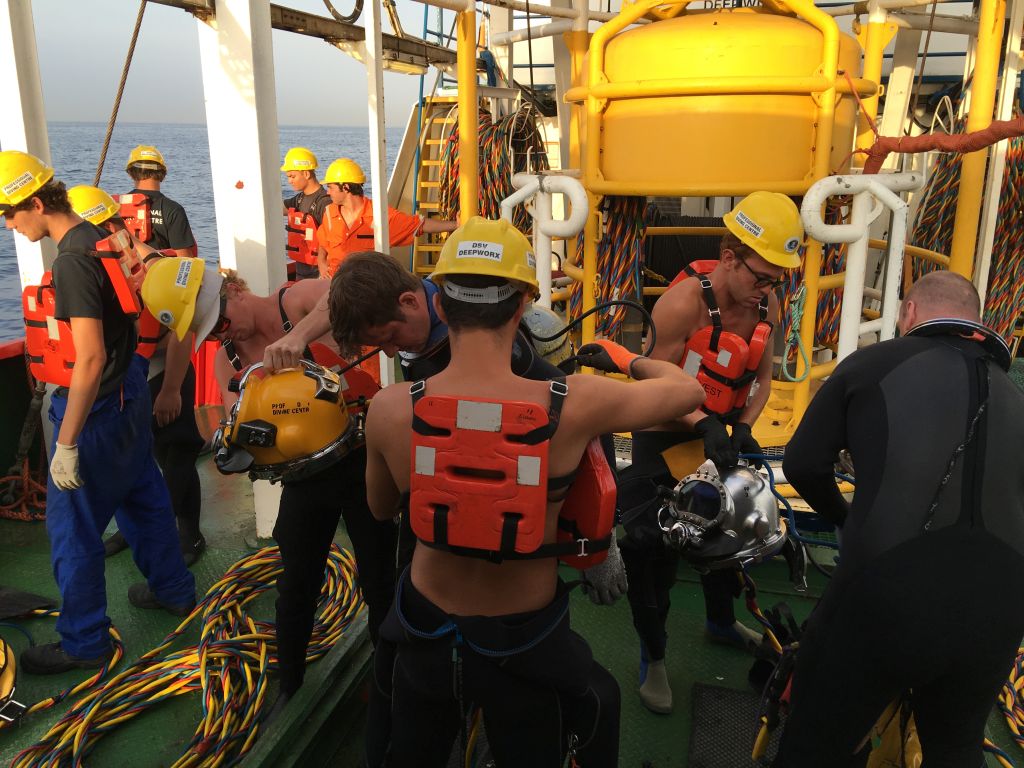
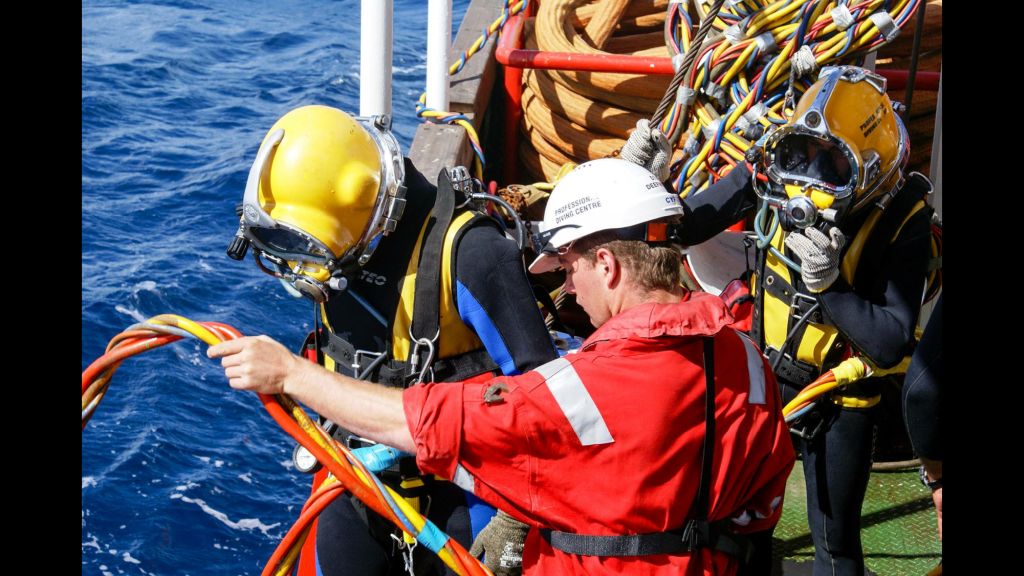
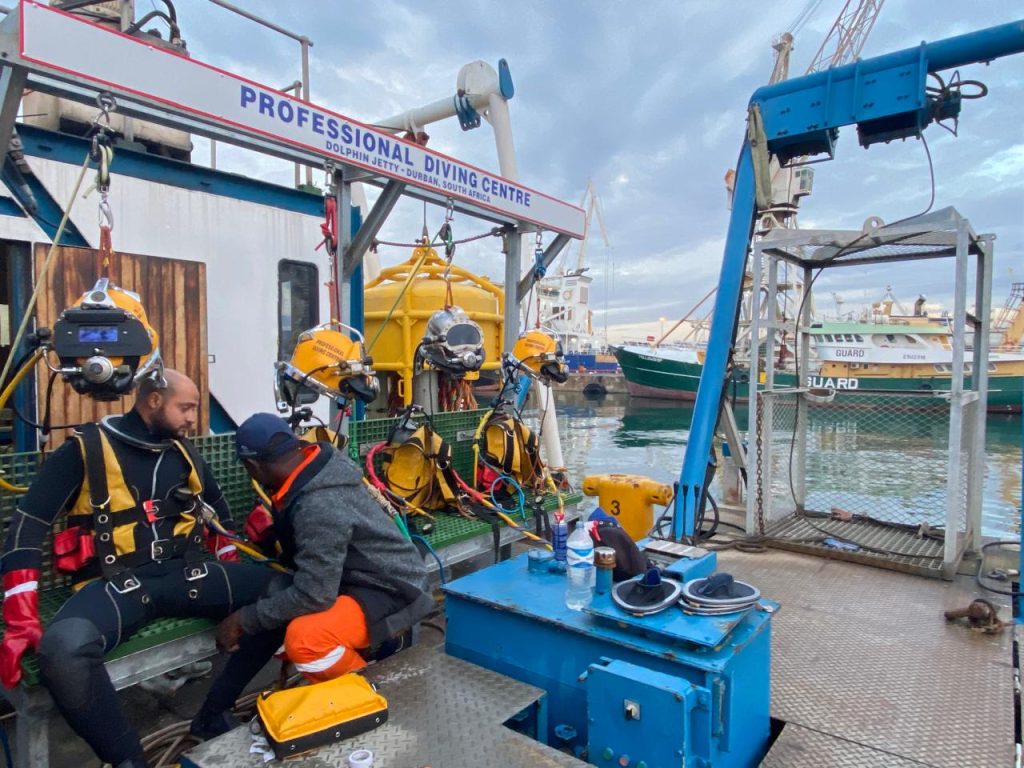
IMCA List of accepted Closed Bell Diving Qualifications Continued:
- Great Britain HSE Closed Bell Diving, HSE Part II HSE Part II (Restricted) (Air range only) Transitional Part II (issued between 1 July 1981 – 31 December 1981) TSA or Manpower Services Commission Mixed gas/Bell Diving (issued between August 1975 and June 1981)
- Australia Diver Accreditation Scheme – Part 4 – [Closed Bell]
- Canada Category 3 Diver – [Closed Bell] Bell Diver
- France Classe 3 mention A – [Closed Bell]
- Netherlands Duikarbeid Categorie C – [Closed Bell]
- Norway Bell diver – diver certificate issued by the Petroleum Safety Authority, Norway [Closed Bell]
- South Africa Class 1 – Saturation Diver – [Closed Bell]
- Spain Buceador Instructor – [Closed Bell] Buceador de Primera Clase o de gran profundidad – [Closed Bell] Buceador Profesional de Gran Profundidad a Saturacion [Closed Bell]
- Sweden Certifikat C – [Closed Bell )
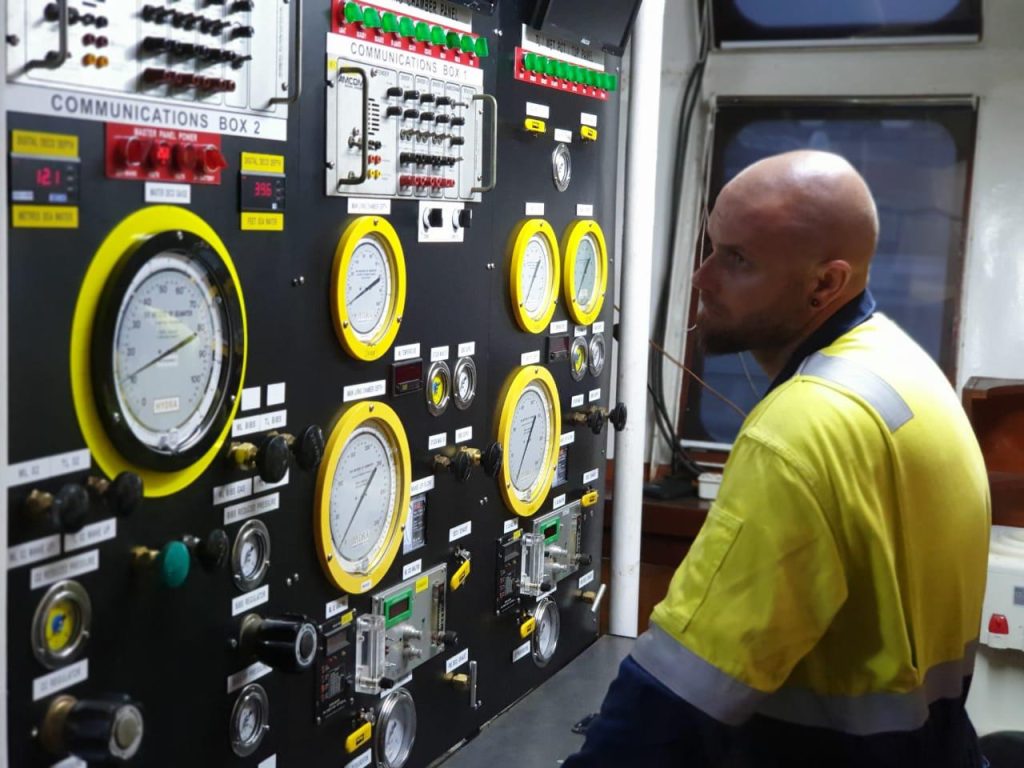
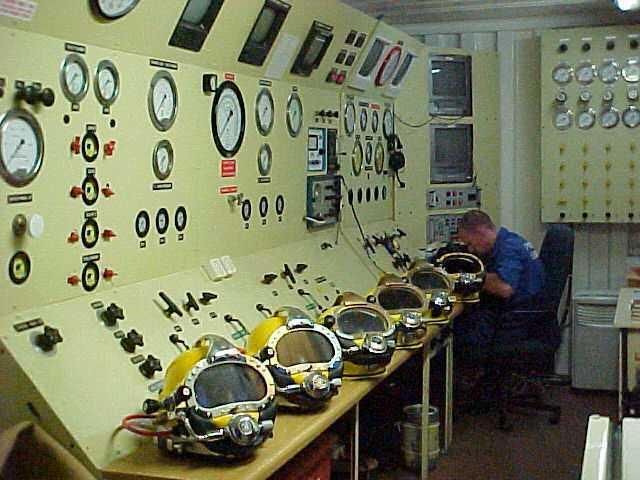
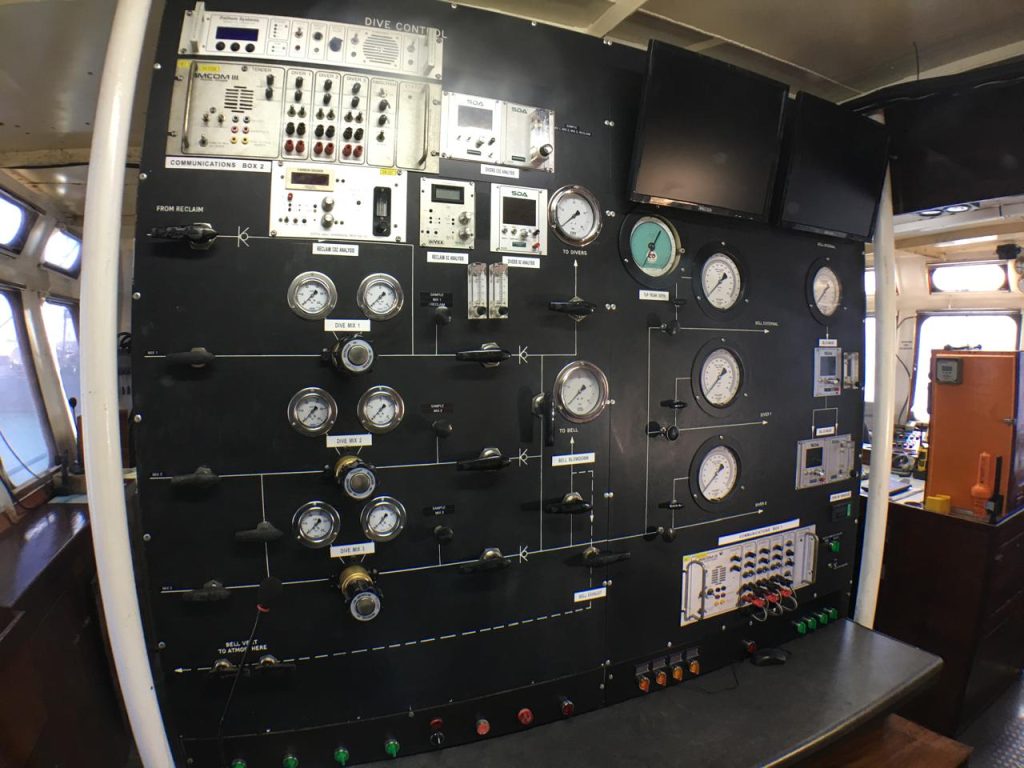
COURSE COST
The PDC Closed Bell Diver Course Cost - includes a recognised IMCA / IDRF Closed Bell and
IMCA A/LST Certificate / Qualification
Course Fee's for 2025 - R450 000.00 ex Acc & Food
Course Fee's for 2026 - R480 000.00 ex Acc & Food
Approx. USD $25 000.00
Please use currency converter to covert the USD $ to your own Currency
IMPORTANT TO NOTE: DUE TO SCAMS PROFESSIONAL DIVING CENTRE DOES NOT USE BOOKING AGENTS – PLEASE MAKE SURE YOU ARE DEALING DIRECTLY WITH PROFESSIONAL DIVING CENTRE – PLEASE DO NOT MAKE DEPOSITS WITHOUT DOUBLE CHECKING ALL INFORMATION WITH PROFESSIONAL DIVING CENTRE
*** We reserve the right to change the prices, Helium Costs and Rand Exchange are factors we cannot control ***
Above prices are subject to the Rate of Exchange.
The prices are at breakeven for startup and would not be sustainable to cover required IMCA D 024 maintenance long term without increases in price. This is a worldwide ongoing maintenance issue and long term situation for all closed bell schools.
***We reserve the right to change the prices if your money has not been paid or received yet.
We reserve the right to delay courses, We reserve the right to inform first & then update standards
We reserve the right to cancel courses outright with providing a refund if valid reasons***
The 35 days which includes the compulsory IMCA A/LST as per the new IMCA/IDRF standards
The Closed Bell course is recognized internationally worldwide by IMCA / IDRF
The New IDRF / IMCA bell standard covers closed bell training for all countries
The PDC Application for Closed Bell PDC training requires you to fill in the dive log forms for Surface Supplied Work / BT etc and return them with the other documents we requested i.e.: certs, scanned logs etc.
Once we have all the information requested, we will get back to you and let you know if we are able to accept your application and forward other info to you in regards to acceptance and the deposit, payment and more info on the course.
On receipt of your 50% deposit with our reference number you will be allocated a place on a course.
Final payment is to be made 3 weeks before the start of the course.
CLOSED BELL DIVING COURSE PRE-REQUIREMENT INFORMATION
PDC Minimum qualifications & diving experience for Closed Bell Diver training are:
Only Formal Commercial Diver School Training accepted by IMCA / HSE/ IDRF/ for Surface Supplied Diver Training to 50m with wet bell & Surd 02 such as HSE Part 1 or HSE Top up, or equivalent accepted by HSE and IMCA and PDC. No South African RPL training will be accepted for safety reasons without been vetted by PDC.
These formal qualifications are listed
- This qualification must have been held for at least 12 months prior to commencing closed bell training and the diver needs on surface supply equipment 100 working air or Nitrox offshore dives with 100 hours bottom time. Please see more on this & exceptional exemption option below.
- If you are not sure of your diver qualification, please email us with a copy of it
Students must be able to understand and make written and verbal communications and communicate easily with others in English. The standard of been able to add, subtract, multiply and Divide required for class II 50 m diving courses applies.
Certificates and Logbooks:
- In-date IMCA DMT
- (Certificates will be verified in advance and must remain in-date for the duration of the course.)
- You need to email scanned copies ahead and bring all applicable original logbooks including your original training logbook and original qualification certificates with you when you attend the course. All original documentation will be cross checked during the first day of attendance.
- All the pre-requisite dives MUST be signed and stamped in a formal acceptable logbook for offshore diving. To be accepted for training the dives entered will be checked against your logbooks and verification of dive details from applicable companies may need to be carried out.
You must have an In-date Commercial Diving Medical acceptable to PDC
During 1st week of training everyone will have dive medical done as part of the closed bell course.
Pre-requisite diving work experience in addition to the above qualifications is required and must be calculated as follows:
- Diver must have and in-date Diver Medic (DMT) qualification prior to undertaking training.
- Experience in Inshore civils dives should have been done & logged before you started offshore diving as this is an industry standard route for progression to offshore diving.
- Logged At least 100 offshore working dives in support of Oil and Gas, with at least 100 hours bottom time 20 offshore dives must be deeper than 20 msw
- In exceptional cases PDC may accept non-oil & gas dives if the diver holds a 50 m IMCA Surface Supplied cert and has 200 working dives with at least 200 hours bottom time, of which 40 dives must be deeper than 20 msw these inshore working dives are for example; Deep dives on Dam Walls or outfall pipelines windmill farm dives or surface mixed gas dives etc. can be accepted and this will be on a case by case evaluation by PDC. This closed bell diver would in the future then be working inshore doing saturation on Dam Walls etc.
- No training school divesmay be counted towards any of the required working dives or bottom times. PDC may also request and decide to see your training logbook and civils inshore dives
- None of the working dives may be shallower than 6 msw or less than 15 minutes bottom time. No bottom time longer than 120 minutes per dive is to be counted.Only bottom time is to count towards the 100 hours.
- Only dives carried out using full surface supplied equipment are acceptable. Surface Supply SBM dives are accepted as they are part of Oil & Gas Diving. It is strongly recommended that you have dived from DP II Vessels.
- Students are to hold a valid offshore survival certification valid for the duration of the closed bell course.
COURSE DATES
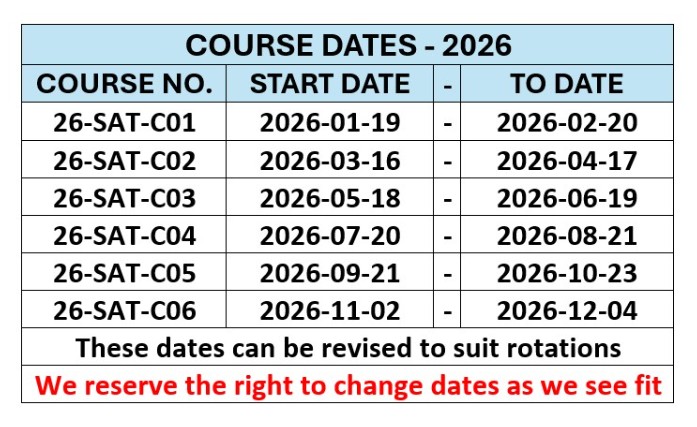
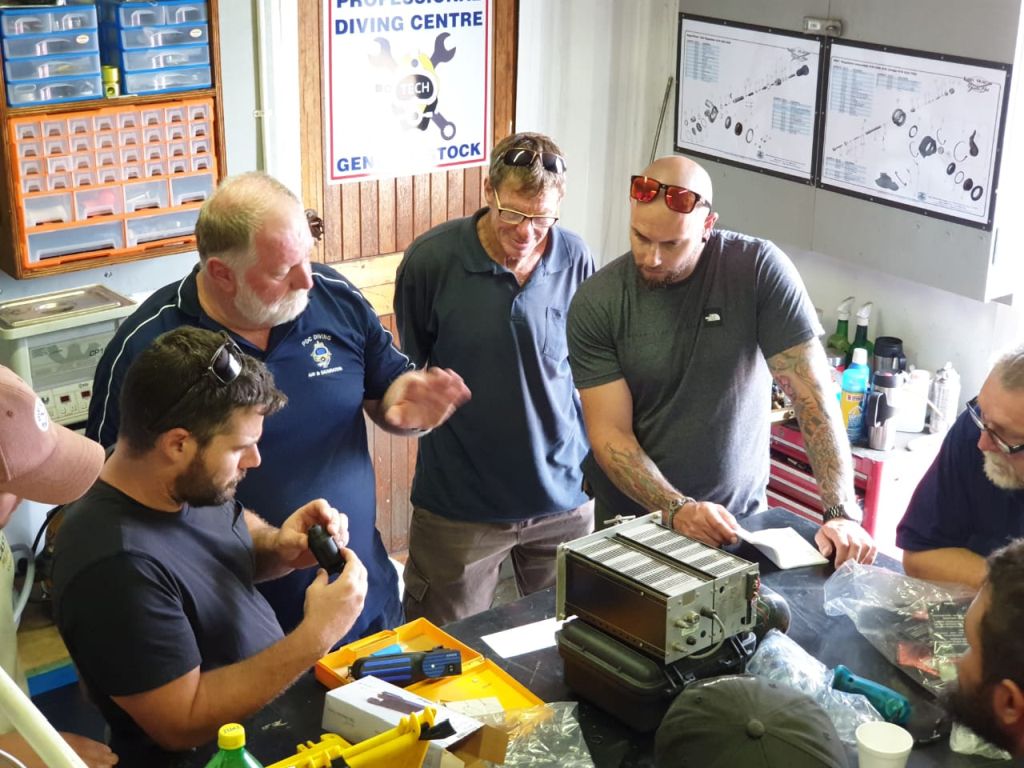
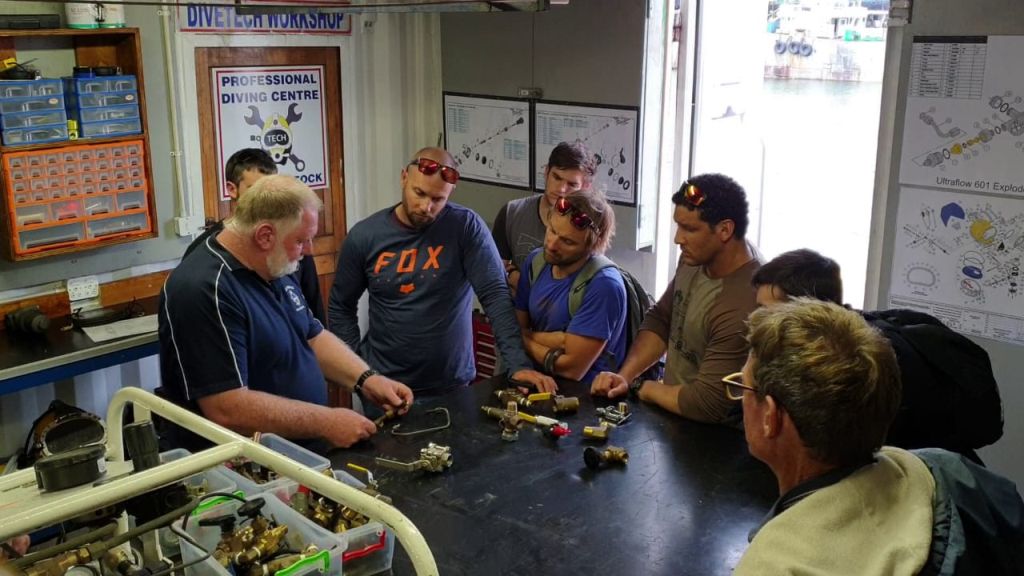
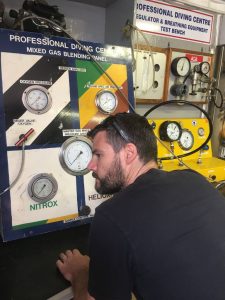
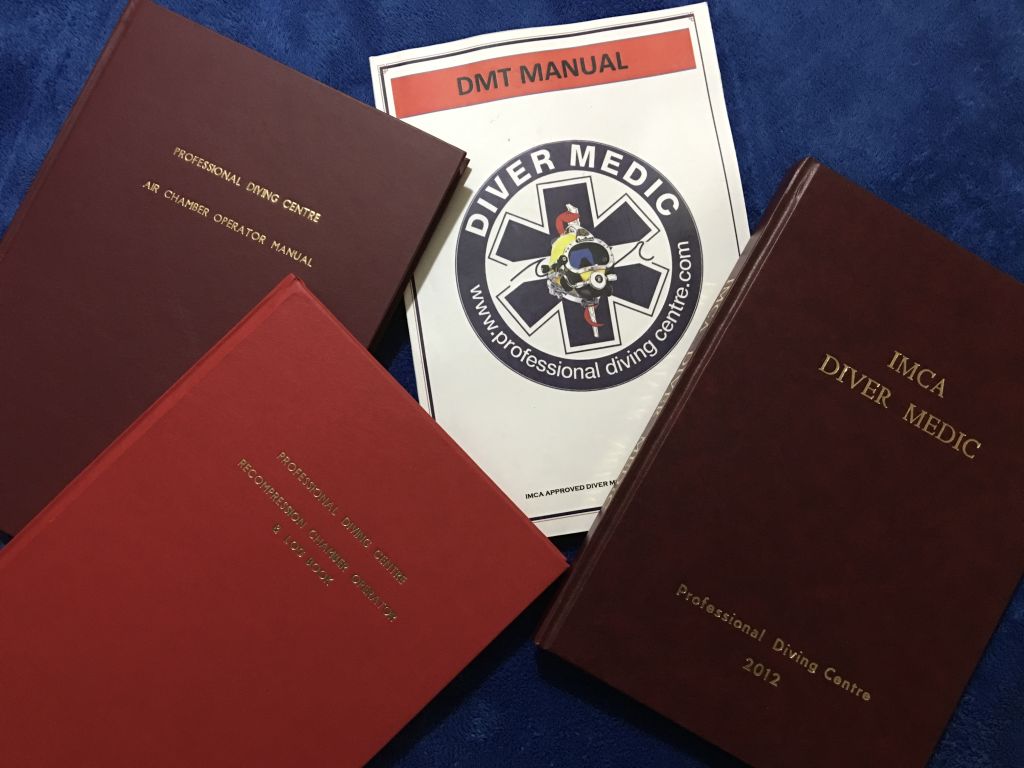
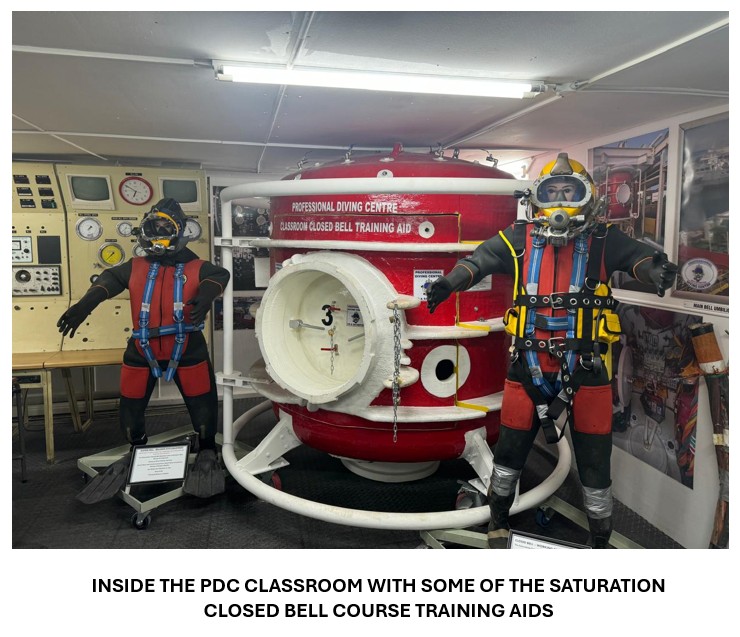
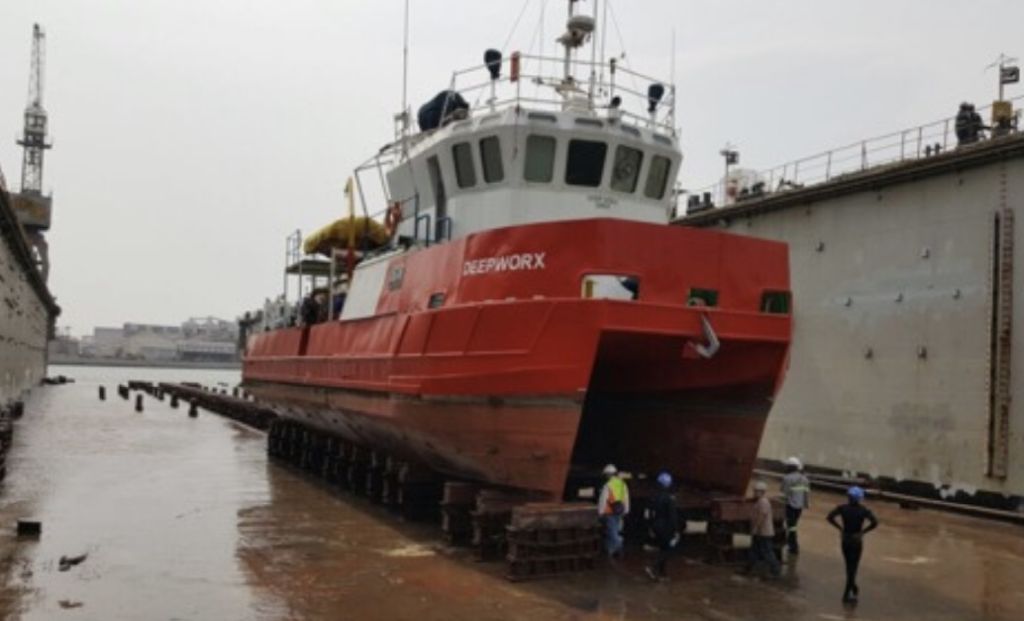
© 2025 All Rights Reserved.
